This site is part of various affiliate programs. Links may give us a small compensation for any purchases you make, at no additional cost to you. Please read the disclaimer policy for full details.
You’ve got a blue tint on your Philips TV and you’re not sure what to do?
Well, this full guide covers every step you need to take to fix your Philips TV blue tint and get your TV working normally again.
No need for an expensive replacement and no need for a technician call-out charge – I’m confident you can fix this yourself with just a few minutes of your time and the steps below.
Philips TV Blue Tint
To fix a Philips TV blue tint, reset your TV by power cycling it. Unplug your TV and wait for 2 minutes. Hold down the power button for 15 seconds to drain any residual charge, then plug it back in and the blue tint will be gone.
This works for nearly everyone to fix their TV’s blue tint, but if it hasn’t worked for you, then we can try a handful of hardware and software fixes to diagnose and treat the problem.
You can see all of the fixes covered in brief in the video below, with more detail following in this article.
Let’s start with a few basic steps that you might have overlooked before we get into the more in-depth fixes.
1. Power Cycle Your Philips TV to Reset It
Although this might seem a basic step, power cycling your TV is often the best way to fix a blue tint on your Philips TV.
Resetting your TV will clear out any issues with non-permanent memory and reset your main board without losing your personal settings.
This is quick and painless and won’t cause you to lose any of your saved settings.
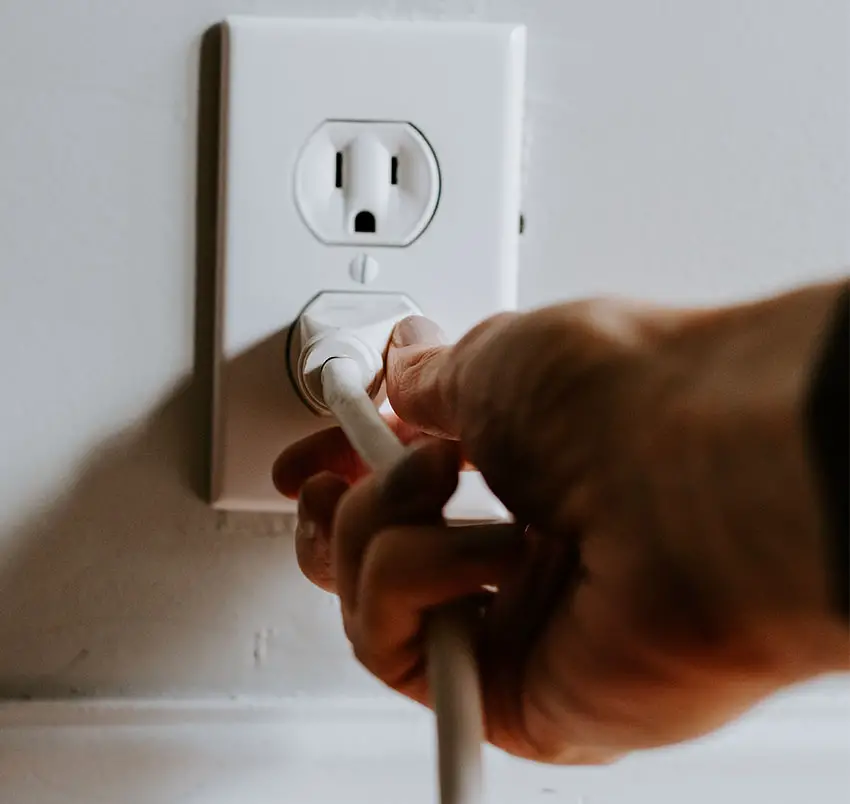
To reset your Philips TV:
- Make sure your TV is switched off and unplug it.
- Hold down the physical power button on the TV for at least 15 seconds.
- Wait for at least 2 minutes for any residual power to drain from the TV’s capacitors (which are capable of storing charge for several minutes).
- Plug your TV back in and try switching it on. You should see a red light if you have been successful.
Make sure you do wait for the full 2 minutes before plugging your TV back in – you would be surpised how long the components within your TV can hold charge, and you want to make sure it has fully reset.
Although this seems a very basic step, don’t overlook it because in the vast majority of cases a simple soft reset fixes most issues.
Most people will now have their TV fixed and back up and running, but if your Philips TV still has a blue tint after resetting, then we’ve got a few more basic fixes to try before getting into the hardware fixes.
2. Check Your HDMI Cables
There’s a strong possibility that a poorly seated cable is automatically switching inputs on your TV, but as it’s not fully connected, it’s creating signal noise which is displaying as a blue tint. This is also a common cause of a Philips TV that won’t turn on.
This comes down to either a:
- Faulty HDMI cable with a break in it
- Damaged HDMI port with broken pins
- Poor HDMI connection where the cable and connector are not fully making contact
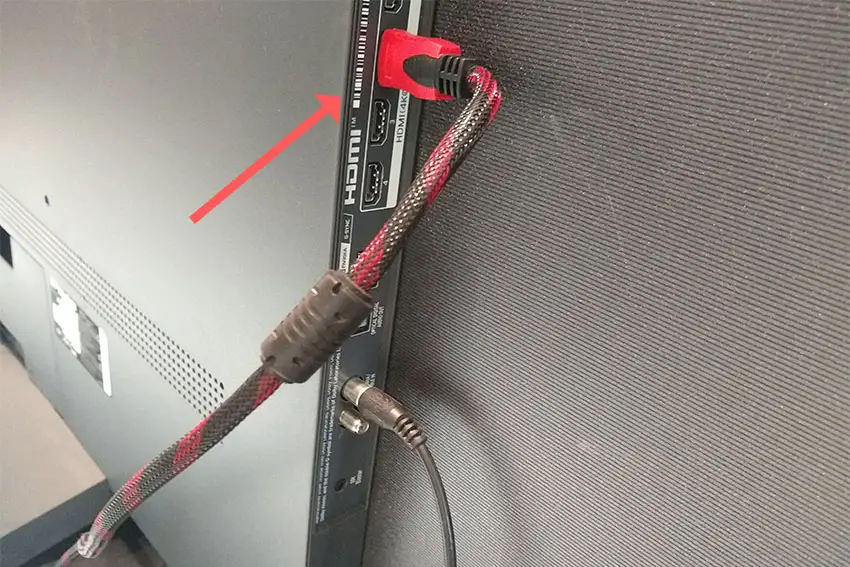
To check your HDMI and other cables:
- Switch off your TV.
- Remove any HDMI or other physical cables connected to the back of your TV.
- If you have any compressed air, use that to clean the contacts both of the cable and in the connector on the TV. If you don’t have compressed air, then blow gently on them.
- Firmly push the cables back into their slots on the TV.
- Switch your TV back on again.
It that hasn’t fixed the problem, then try using a different HDMI input. Most TVs have 3 or 4 HDMI ports.
If you have one that is on a different part of the TV then that would be the best one to try, as it this should have a separate connection to the TV’s main board.
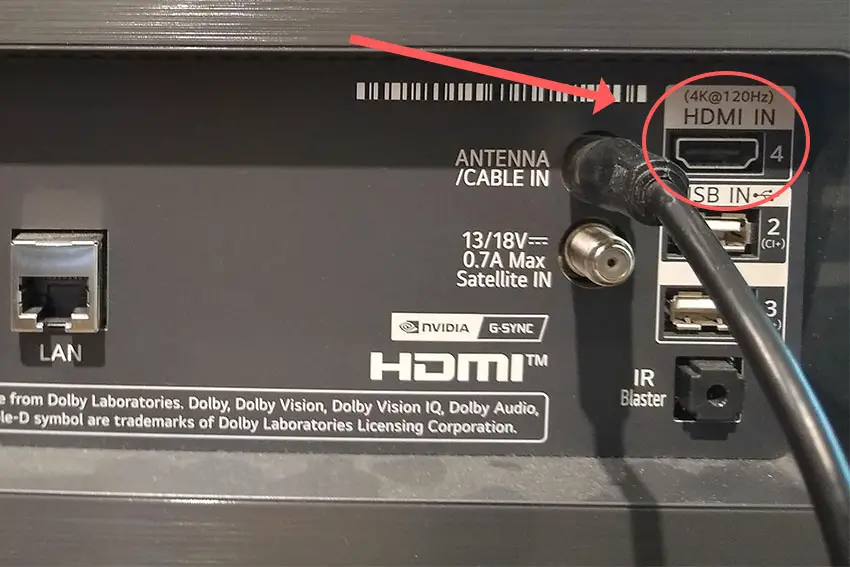
Plug you HDMI cable into the new port, note the number next to it, then choose this HDMI input on your TV, by using the Input or Source button on your TV remote or the Input or Menu button on your TV itself.
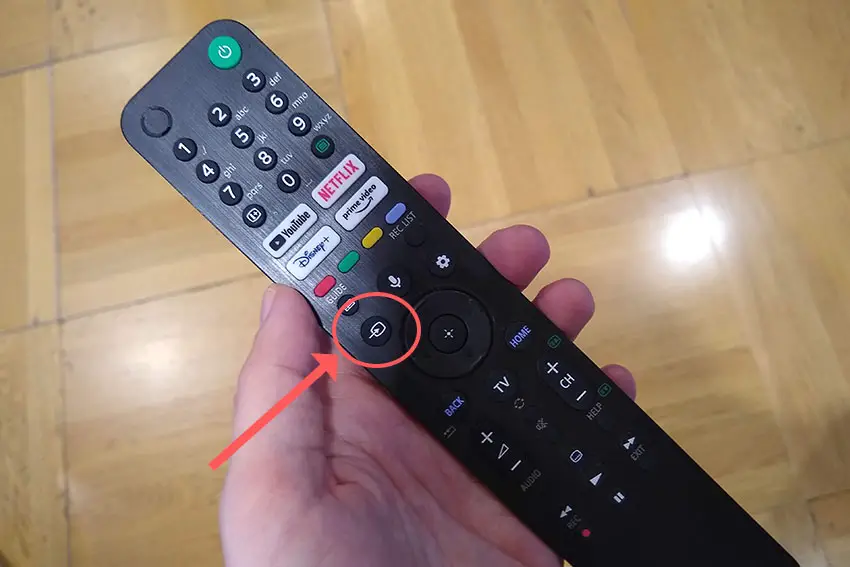
You can also try removing all external devices, including those connected by Bluetooth and any coaxial or signal cables, so that the TV only has a power cable going into it.
When you turn your TV on, this means the screen will be black as it is not receiving any picture, potentially making it tough to see if the blue tint is there or not.
Try to pull up the on-screen menu. If you can see this without a blue tint, then it means that your external connections are the problem, and you should try reseating your HDMI cables one by one, until you find the damaged cable that needs replacing.
3. Change Your Philips TV’s Color Settings
Most Philips TVs have an option to change the color temperature or other aspects of the picture.
If your blue tint is only slight, then this can be a good simple way to fix it, but you will have to play around with the settings with a bit of trial-and-error.
Press the Settings button on your remote and go to the Picture Settings screen.
You can try reducing the Backlight Contrast to see if that helps, then move into the Expert Mode Settings sub-menu.
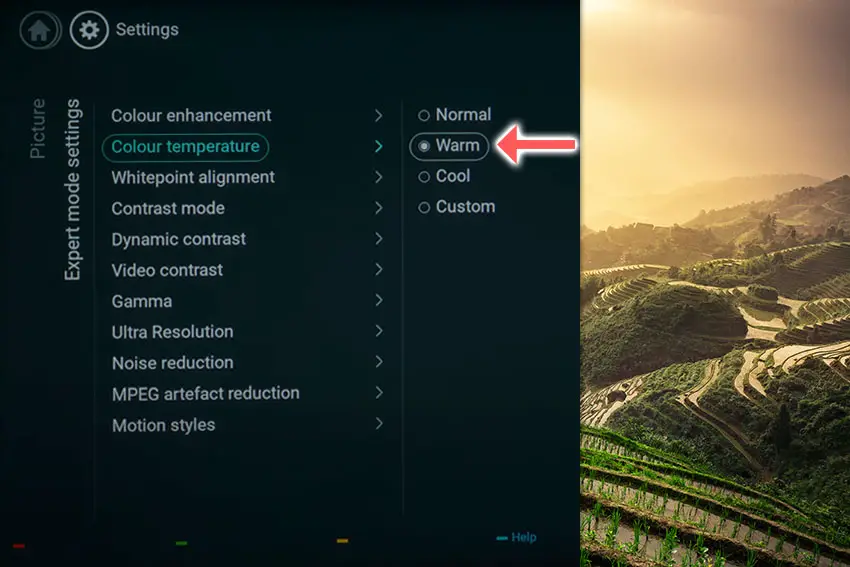
Try setting the Color Temperature to Warm, and if the blue tint is still a problem, then try Custom and manually see if you can fix it.
You can also go into Whitepoint alignment and adjust the individual blue channels to try to remove the tint.
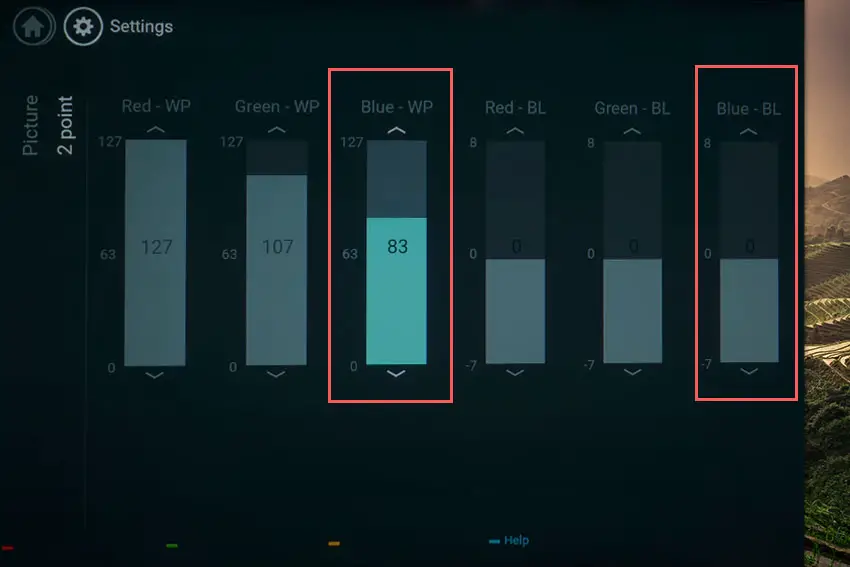
4. Philips TV Firmware Update
Software and firmware issues have been known to cause problems with Philips TV displays.
As with any product, you should ensure that you have updated your TV’s firmware to the latest version, even if it is new.
Most modern Philips TVs support auto-updating of firmware, but you can’t assume that this is turned on for you.
To manually update firmware on a Philips TV:
- Press Settings on your remote.
- Select All Settings.
- Then Update Software.
- And Search for Updates.
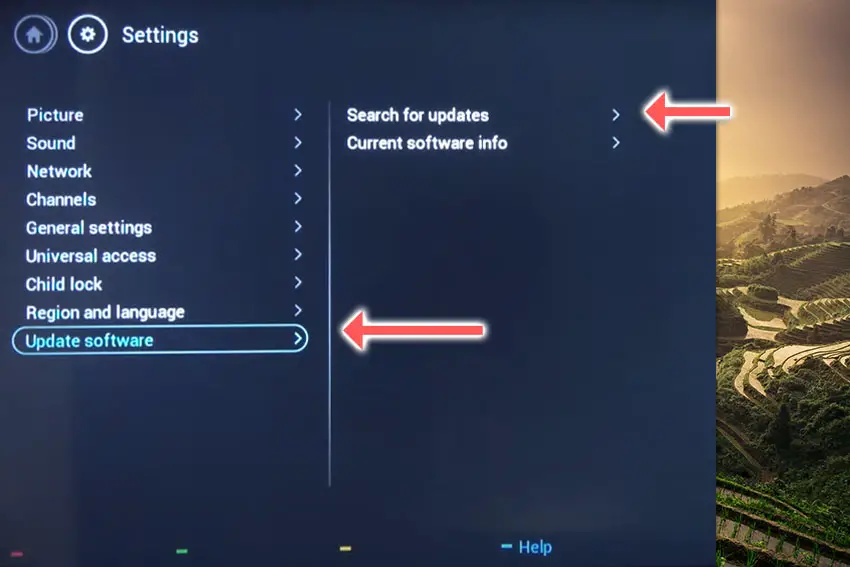
- Select Internet and then Start the update process.
- Your TV will restart and the update process will be complete.
For older Philips TVs, you might have to update via USB:
- Go to the Philips website and type in your model of TV (found on a label on the back of your TV).
- Scroll down to Software & Drivers and take a look at the firmware version of the software upgrade.
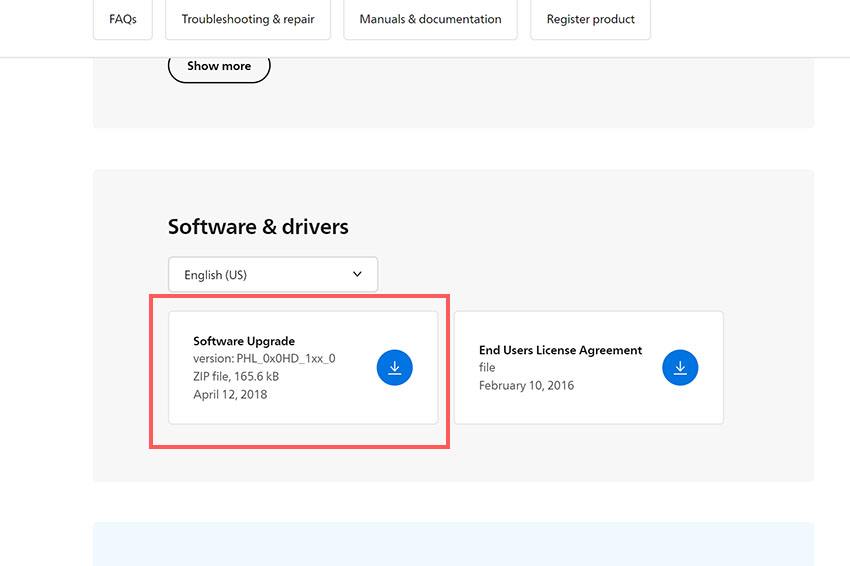
- Check the current version of your TV’s software and confirm that it is a lower numbered version than the one on the Philips website. To do this, using your TV remote go to Settings -> Update Software -> Current Software Info.
- If the software on the website is a higher numbered version, download it to your computer.
- Unzip the download and transfer this to a USB stick.
- Switch your Philips TV on and plug the USB stick into your TV’s USB port.
- Follow the on-screen instructions to install the upgrade.
5. Philips TV Factory Reset
Returning your TV back to its factory settings is a more extreme step, as it will delete any personalization features or connected devices, but it’s always worth a shot when other methods haven’t worked.
The simplest way to factory reset a Philips TV is with the remote, following the steps Settings -> All Settings -> General Settings -> Reinstall TV and confirm you want to factory reset your TV.
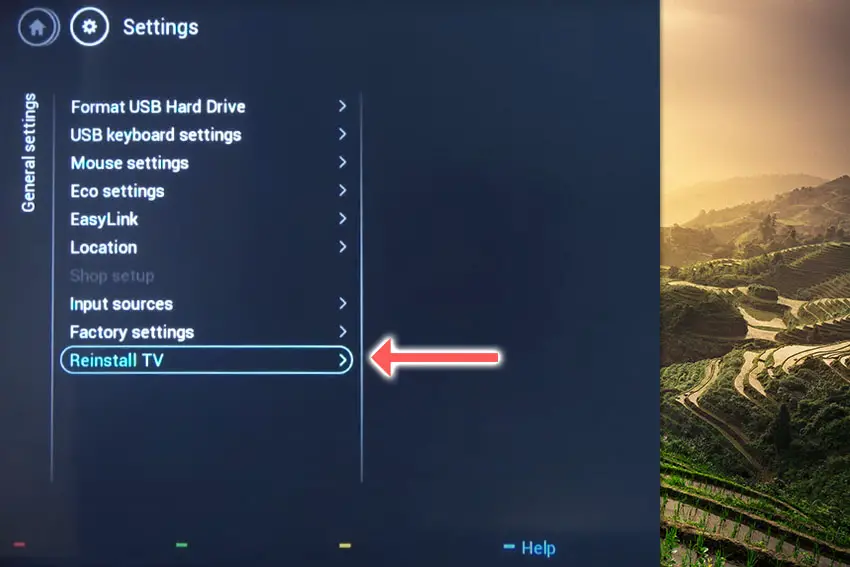
If your Philips TV remote isn’t working, then to factory reset your TV, press the Vol + and Vol – buttons on the side of your TV simultaneously to open the on-screen menu, then use the buttons to navigate to the Reinstall TV option as above.
6. Replace Your Philips TV’s Backlights
Blue tints are very common on TVs older than two or three years. This is because of the design of the LEDs used in the backlight and the fact that they can easily burn out.
Philips TV backlight panels use blue-light LEDs as their base, with a phosphor yellow coating over the LED.
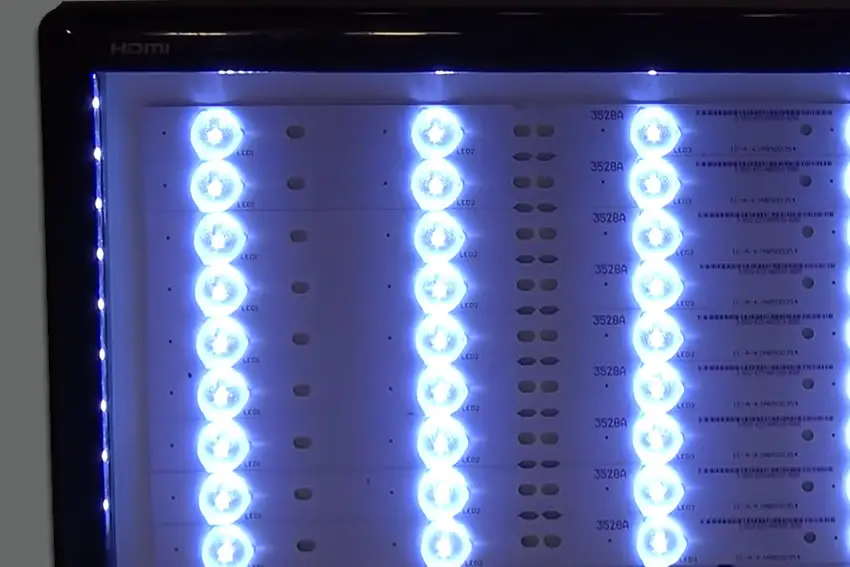
The blue light shining through the yellow phosphor creates white light, which is what you see on a correctly functioning TV.
But after a couple of years, the phosphor can burn off, meaning that blue light shines through unfiltered, giving your screen a blue tint.
These LEDs must be replaced, but luckily this is not a terribly expensive job, although it does require some work on your part.
If you’re not comfortable totally disassembling your TV, then now is the time to get a professional in, or to get a new TV.
Backlights on modern Philips TVs come in LED strips of varying lengths. Older models used lengths that spanned the entire frame of the TV, but due to cost savings, more recent TVs use a set 16″ or smaller LED strip which is connected in series for each row to span your TV.
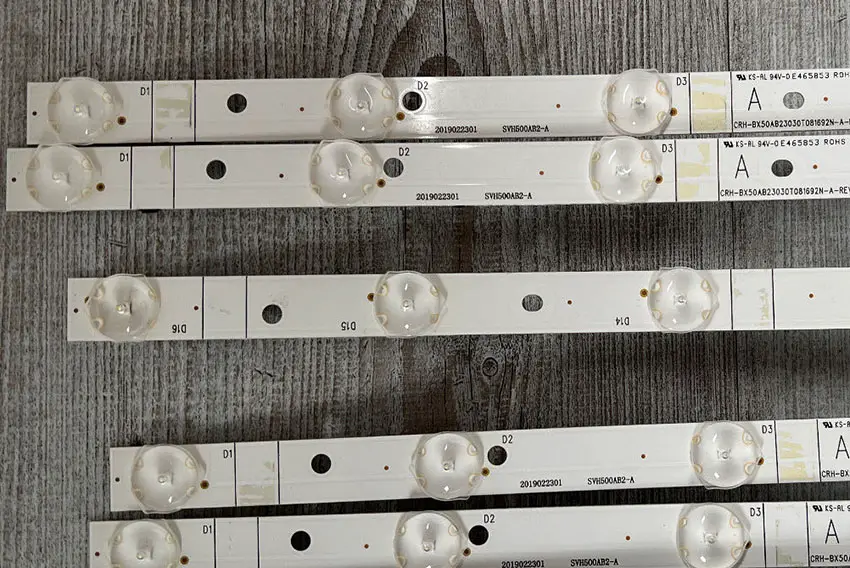
You can get replacement LED strips quite easily from eBay – just put in your TV model number to be sure you are buying the correct type.
If you have a TV backlight tester to hand, then you could get away with testing every backlight strip in your TV individually and only replacing the broken strips, but it’s a lot less work to just replace every backlight and skip the testing, particularly given the relatively low price of LED backlights.
See the full process for replacing backlights below. This isn’t for the faint-hearted, but it will save you a considerable amount of money from either professionally repairing or replacing your TV.
To prevent LEDs burning off their phosphor layer in future, make sure you do not set your backlight to 100% brightness. The phosphor layer is destroyed by thermal degradation of the LEDs, caused by a too bright backlight setting. Reduce this to the lowest level you are comfortable with to prolong your backlight’s life.
Philips TV Support & Warranty
It goes without saying that if your TV is under one year old, then you should contact Philips customer support to get it replaced under warranty.
You can call Philips directly on:
- 833-978-3323 (Mon – Sat, 10am – 9pm EST,)
Or use their live chat.
Even if Philips won’t fix your TV, they might still offer you a discount off a future model if you pester them hard enough! This is always worth a try in my experience.
So, How Do You Fix a Philips TV Blue Tint?
To wrap up, if you’re seeing a blue tint on your Philips TV, then to fix it:
- Reset your TV.
- Replace your HDMI cables.
- Update your TV’s firmware.
- Factory reset your TV.
- Change your picture settings.
- Replace your TV’s backlights.
Hopefully you’ve fixed your TV, but if not, give me a shout in the comments and I’ll see what I can do to help.
Read More:
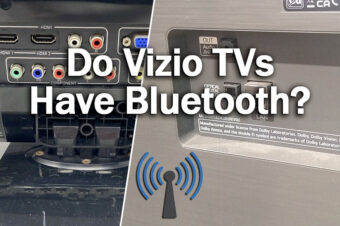

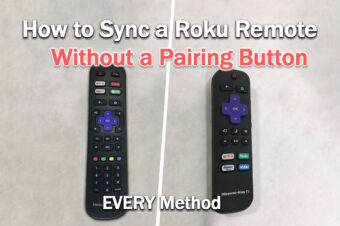



Leave a Reply